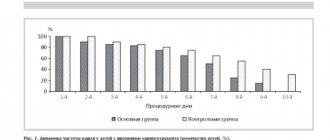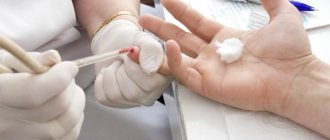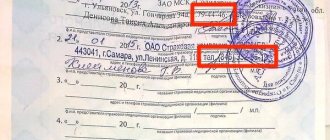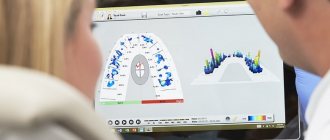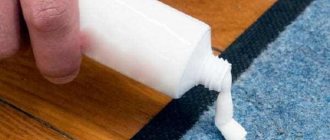Snot (nasal mucus) is a viscous muconasal secretion that has the consistency of mucus and is produced by the secretory glands of the nasal mucosa. The discharge of snot from the nose is called a runny nose or rhinorrhea (one of the symptoms of catarrhal rhinitis). Rhinitis in infants can have different etiologies and be the result of infectious diseases, allergic reactions, atrophic and neurovegetative processes.
Runny nose in infants is a common disease
Snot during teething is most often not associated with pathological changes in the functioning of the airways, and the causes of rhinorrhea during this period are physiological in nature. The use of traditional antiviral, antihistamine and antibacterial drops to treat such a runny nose is unjustified until the true cause of the appearance of snot is determined and the general condition of the child is assessed.
Snot during teething
Rhinorrhea during teething: causes
Baby teeth usually appear in babies at the age of 5-9 months, while the process of teething can begin much earlier - from 3-4 months. The gradual eruption of dental crowns is always accompanied by spontaneous opening of the gums.
Baby teething
This process is quite painful and gives the child a lot of unpleasant sensations and discomfort, so most children during this period become whiny, restless, and capricious. At the same time, almost 60% of infants experience another symptom that is considered characteristic of the eruption of baby teeth in the first year of life - a runny nose.
Teething is often accompanied by a runny nose
There are several reasons that can provoke the appearance of rhinorrhea during teething.
The process and timing of teething depend not only on inherited genetic parameters; the timing of teething can be influenced by external and internal factors. For example, climatic conditions, the course of pregnancy and the nature of nutrition of the mother and child after birth, illnesses of the baby, and more. Read more about the teething schedule for infants on our website.
Reduced immunoresistance
Weakening of immune function during the eruption of dental crowns is a natural reaction of the body to an internal factor that is a mediator of stress. Dentists note that most often, a pronounced immune disorder during this period is observed in children whose teeth appear too early (before 4 months), or, conversely, too late (after 10 months). The risk of a viral or bacterial infection is higher if the following factors are present:
- insufficient hygiene of the baby’s hands and skin;
- poor processing of children's bedding and underwear, toys, feeding utensils, pacifiers;
- irregular wet cleaning in the apartment (especially in the children's room);
- non-compliance with standards for ventilation and humidification of rooms in which the child spends most of his time;
- frequent appearance in crowded places.
Oral hygiene in children
If a child begins to teethe, contact with strangers or people who have recently had a respiratory disease should be temporarily prevented, since the risk of infection during this period is quite high for all children.
While your child is teething, it is worth protecting him as much as possible from possible airborne infections.
Note! Compliance with increased preventive measures during teething is recommended for children suffering from congenital autoimmune diseases (cystic fibrosis, agranulocytosis, diabetes mellitus, etc.).
Strengthening secretory function
A natural protective mechanism during teething is to increase the activity of secretory glands that produce salivary and muconasal secretions. Rhinorrhea is observed mainly in infants with manifestations of hypersalivation (increased salivation), since anatomically the nasopharynx and oropharynx have a similar structure and are located in close proximity to each other.
A runny nose usually bothers babies with increased salivation.
In this case, muconasal mucus is produced by surface epithelial cells located in the mucous membranes of the nose. The secretion contains not only water, mucus and epithelial particles, but also mucin - gel-like high molecular weight mucoproteins that contain a large amount of acidic polysaccharides. If the secretory glands work too actively, the amount of mucus secreted increases several times, which leads to its removal from the nasal cavity through the anatomical openings - the nostrils. In some cases, such snot can flow into the throat along the back wall of the pharynx, causing a cough, which many parents perceive as a symptom of a respiratory infection.
- How to deal with unpleasant odors in the home of a seriously ill person
Coughing may be normal during teething
Stimulation of blood circulation
During teething, the flow of blood and lymph to the vessels located in the oral cavity increases. Increased blood and lymph circulation also occurs in the vessels of the nasal cavity, which has a stimulating effect on the secretory glands and causes increased secretion of muconasal mucus, which is commonly called snot.
Clinical features
“Dental” rhinitis” (“dental runny nose”), which is a type of physiological runny nose, must be distinguished from pathological rhinitis, which can be infectious, allergic and neurovegetative in nature. The physiological secretion of nasal mucus against the background of changes occurring in the child’s body during the period of teething crowns has certain clinical features that need to be paid attention to. Such a runny nose is not accompanied by an increase in temperature, the release of thick yellow, brown or green snot, or the appearance of allergic reactions in the form of a rash or itchy skin.
If the baby has snot and saliva, but there is no fever, it means that another baby tooth will appear soon.
In this case, a dental runny nose may well occur against the background of a slight change in stool due to increased secretion of the salivary glands and the ingestion of a large amount of saliva, which mixes with food and dilutes its consistency. A deterioration in general well-being is also possible, since the process of teeth appearing is quite painful and unpleasant for the child. Physiological rhinitis may also be accompanied by other pathological symptoms, for example, cough, sleep disturbance or refusal to eat, but only a doctor can establish their relationship with the possible presence of infectious pathogens in the body.
Your baby may be fussy and have trouble sleeping during teething.
The nature of the appearance of a runny nose during teething
Parents and pediatricians always play it safe as soon as they discover any abnormalities in the baby’s condition. Therefore, even a slight runny nose is often treated like ARVI. This is correct, because babies do not yet know how to blow their nose normally, and sputum flows down the trachea into the bronchi. This can subsequently lead to complications such as bronchitis or even pneumonia.
However, it is not always necessary to rely on vasoconstrictor drugs. A runny nose during teething occurs:
- non-infectious nature. The problem of snot during the period of teeth growth in a baby is explained by physiological reasons. The anatomical structure of the nasopharynx is as follows: the blood supply to the gums and mucous membranes of the nasal passages is carried out through a network of vessels that are closely interconnected due to their close location. During teething, the blood supply to the gums increases, so the mucous membranes begin to work more actively - saliva is produced abundantly in the oral cavity, and nasal mucus ;
- against the background of a respiratory infection. When a baby is teething, his local immunity suffers a slight disruption. Resistance to colds decreases, so the child easily picks up any virus.
If a runny nose is caused by physiology, snot on the teeth may not go away for weeks, which is not typical for ARVI.
As for nasal congestion due to a respiratory infection, excessive mucus production is not the only symptom. Other catarrhal phenomena and changes in the baby’s well-being will not be long in coming.
Comparative characteristics
To make it easier for parents to navigate the clinical features of rhinitis in infants, the table below provides a comparative description of various types of runny nose with characteristic symptoms and signs.
How to distinguish dental rhinitis from pathological runny nose?
| Criteria (signs and symptoms) | Physiological secretion of nasal mucus | Infectious rhinitis | Allergic rhinorrhea |
| Appearance of snot | The snot has a watery, transparent consistency that persists even after several days. They have no color. | With viral infections, snot is usually watery and has increased viscosity and fluidity. If a bacterial infection is added to a viral infection, the snot becomes thick and acquires a yellowish, green or swampy tint. | The discharge is transparent, has a low degree of viscosity, and some of it causes irritation to the skin under the nose. |
| Number of snot | Moderate to very heavy. | Light to moderate. | From light to very heavy. |
| Smell of mucus | Absent. | With bacterial infections or severe atrophy of the nasal mucosa, the discharge may have a strong, foul odor. | Absent. |
| Factors preceding the appearance of snot | Mucus is released randomly. | The appearance of rhinorrhea is usually preceded by hypothermia, contact with a sick person, or other risk factors for viral and bacterial infections. | A runny nose occurs after contact with various pathogens (dust, animal hair, some foods, etc.). |
| Cough | Available. | Appears almost always. | Possible, often accompanied by itchy nose and sneezing. |
| Body temperature | Normal (moderate hyperthermia is possible within the range of low-grade fever, associated with the fact of painful teething). A physiological increase in temperature to 37.3°-37.5°C lasts no more than 1-2 days. | Increased (may exceed low-grade levels and be accompanied by febrile fever). | Normal. |
An infectious runny nose is also characterized by nasal congestion, impaired nasal breathing, and the appearance of other symptoms of various respiratory diseases.
If your child has a fever, you should call a pediatrician
With allergic rhinorrhea, a child may experience skin itching, rashes and other signs of allergy typical for this group of diseases.
What is the nature of the discharge?
Young mothers are concerned about the question - how to determine whether it is a cold or a reaction to teeth?
When teething, snot can only be liquid and transparent in moderate quantities , whereas, as with a viral infection, the discharge becomes thick and yellowish in color. The nasal discharge from a healthy child looks like saliva, making it easy to catch colds.
It is noteworthy that snot against the background of teething does not interfere with full nasal breathing and does not provoke congestion.
Despite this, the discharge can annoy the baby, flowing down the back wall of the nasopharynx when taking a horizontal position and causing a coughing attack.
Other signs of teething
If a baby has clear snot running from his nose for several days in a row, but the child himself feels well and the body temperature remains within normal limits, it is necessary to carefully examine the oral cavity and skin. If pathological rashes and scratching marks are detected on the skin, you should immediately contact an allergist. If everything is fine with the skin, you should conduct a visual examination of the oral cavity. If, along with a runny nose, swelling and redness of the gums are noticeable, most likely the discharge is associated with the process of teething.
- What does snot with blood mean when you have sinusitis? How do you know when you need to see a doctor?
The following symptoms can also be considered signs of the imminent appearance of the first teeth:
- increased secretion of saliva (hypersalivation);
- itching of the gums (the child constantly pulls surrounding objects into his mouth and gnaws on them);
The child massages his gums, sucking and trying to gnaw toys and his fingers with his gums
- stool liquefaction;
- crying and restless behavior during feeding (the child should not twist his legs or pull them towards his stomach);
The baby may not eat well or cry while eating
- the appearance of dense bumps on the surface of the nose.
If the lump turns white, or there are clear signs of gum opening around it, it means that the tooth will erupt within the next 5-7 days.
The lump becomes white, or there are clear signs of gum opening around it
How to distinguish a runny nose of an infectious nature from snot on teeth
Most mothers complain that it is impossible to understand what causes nasal congestion in their baby. In fact, determining why a baby has snot on his teeth is not so difficult.
Normal Teething Symptoms
In anticipation of the tooth breaking through the gum, some babies become restless, have difficulty sleeping and eating. The main symptoms of teething are:
- The baby's gums swell and become red. If you lift your lips, you can see that the crown of the tooth is already in the gum and is about to break through it;
- excessive salivation;
- refusal to eat, poor appetite;
- the child constantly chews everything that comes to hand;
- the baby looks overexcited, distracted and tired. He sleeps poorly and is often capricious;
- body temperature can either rise or fall, or constantly remain within subfebrile levels;
- the baby develops clear snot;
- Loose stools may occur - up to 4 times a day.
All these signs disappear and the child’s condition returns to normal as soon as the tooth breaks through the gums. Usually the condition improves immediately after a piece of the dental crown is cut through.
The appearance of a new tooth against the background of ARVI
If the baby has picked up some kind of infection, then all of the above symptoms will be accompanied by the following:
- elevated temperature up to 38.5C;
- profuse runny nose - the snot is initially transparent, then white or yellow;
- red throat and inflamed tonsils;
- dry cough (usual coughing is normal with a runny nose, we are talking about a deep cough);
- general lethargy and weakness;
- tearfulness.
These are signs of a typical respiratory infection, which often occurs due to a decrease in the baby's immune system during the period of the appearance of a new tooth.
Main differences
I don’t want to stuff my baby with medications one more time. Therefore, one can understand the desire of parents to understand when a runny nose on the teeth is normal, and when it is a manifestation of an illness. You can distinguish snot on your teeth from a cold by the signs given in the table below.
| Snot on teeth of non-infectious nature | Runny nose during teething due to ARVI |
| All symptoms occur suddenly and together, rather than one after another. The baby immediately develops a fever, a runny nose and other signs. | The malaise appears gradually. The first two days there is a fever and redness of the throat, then a runny nose begins. |
| The child’s throat is not red, the tonsils are not enlarged. | Obvious hyperemia of the larynx, enlarged and inflamed tonsils. |
| The snot is transparent, thin, like water. There is not a lot of mucus, and there is almost no swelling of the nose. | As the disease progresses, the snot becomes white or yellow and thick. It is difficult for the baby to breathe through his nose due to severe swelling. |
| The baby may cough slightly as mucus drains into the larynx. As a rule, this does not cause any complications, and the cough disappears along with the snot. | At the beginning of the disease, the child may have a dry, barking cough. After a profuse runny nose appears, it becomes deep and hoarse. |
| A runny nose can last for two weeks, and it will end exactly when the crown of the tooth appears on the gums. | Thick snot disappears in 7-10 days. Then they can be replaced by transparent ones, which will stop bothering you as soon as the tooth comes out. |
Interesting fact! A fever in a child’s teeth may appear for 5-7 days, whereas with ARVI it does not last more than 3-4 days in a row from the moment the first symptoms appear. You can also distinguish a fever from a cold by the marks on the thermometer. If it rises sharply and falls heavily throughout the day, this is a manifestation of teething. If it easily becomes confused and disappears completely by the evening, but the tooth does not appear, then we are talking about ARVI.
Sometimes the symptoms of the disease overlap with the natural signs of teething, so you should contact your pediatrician in any case!
Is it necessary to treat “tooth” snot?
One of the most common mistakes that many parents make if their child develops snot is to independently use various medications to combat this problem. The first place in this list is traditionally occupied by various anticongestive drugs that cause constriction of blood vessels and are intended to relieve swelling in the nasal cavity. Such drugs include drops “Nazivin”, “Naphthyzin”, “Xylometazoline” and other drugs with a similar mechanism of action.
The main component of the drug is oxymetazoline hydrochloride
Anticongestants have a large number of side effects, the main of which are the rapid addictive effect and gradual atrophy of the nasal mucosa, which can ultimately lead to the development of chronic atrophic rhinitis. The use of these medications is justified only in severe cases, when the child cannot breathe normally due to severe swelling of the mucous membrane, which happens mainly with infectious rhinitis. Antihistamines that block the production of the main mediator of inflammatory reactions (histamine) are also unacceptable for the treatment of physiological rhinorrhea associated with teething.
Important! Despite the fact that the use of traditional remedies for snot associated with teething is not recommended, it is impossible to completely refuse treatment, since stagnation of mucus in the nose creates an excellent breeding ground for various bacteria and can cause serious complications: otitis media, bronchitis, etc. .d.
Runny nose in a baby
A runny nose (acute rhinitis) is one of the signs of ARVI and may also be accompanied by an increase in body temperature, coughing and decreased appetite in a child. Acute rhinitis is a serious problem for infants and, especially, newborns. In this case, the infant becomes restless, refuses breast milk or formula, and sleeps poorly. The main symptom of rhinitis is the appearance of nasal discharge: initially liquid and transparent - serous, then thicker - mucous, and finally, when a bacterial infection is attached - mucopurulent. An age-related feature of young children is narrower nasal passages compared to adults, so the former’s nose becomes clogged more quickly than the latter. In addition, it is extremely difficult for a baby to breastfeed with a stuffy nose, and sometimes almost impossible. Everything is further complicated by the fact that babies are not able to blow their nose on their own. Parents in such a situation can help them both by using folk remedies and recognized medications for the treatment of acute rhinitis in children.
Remedies and methods for treating runny nose in infants
Mechanical cleaning of the mucous membrane and removal of formed crusts using cotton swabs with a limiter for infants. In any case, the child will not lie still, but despite this, it is extremely important to carry out this procedure very carefully. Damage to the mucosa will lead to infection and complications.
Moisturizing the nasal mucosa. A folk remedy such as warm mineral water is quite suitable for this purpose. Salt water will soften the crusts in the nose and make it easier to remove them mechanically. To normalize the condition of the nasal mucosa and improve its barrier function, you can also use sterile solutions of sea water with microelements sold in pharmacies, such as Salin and Aqua Maris. Such solutions are ideal means for hygiene of the nasal cavity of infants: one injection into each nostril is enough, they have no side effects and their only contraindication is an allergy to the components of the drug.
Use of nasal aspirators. Today in pharmacies and children's stores you can find a huge selection of children's nasal aspirators, from simple to electric. A simple nasal aspirator is a bulb or rubber balloon with a tip. There are different types of tips with hard, soft and wide tips depending on the age of the child. They can be taken apart and washed with soap, but should not be boiled. When using an aspirator, you need to squeeze the rubber balloon, release the air and bring it to the corresponding nostril, after first closing the other nostril, and then release it and eventually collect all the mucus from the nose. The use of such aids is extremely controversial. According to the authoritative opinion of pediatric ENT doctors, frequent and improper use of an aspirator creates all the conditions for infection and the development of otitis media. Ideally, it is better to use an aspirator if there is significant impairment of nasal breathing due to nasal secretion congestion and if other more conservative methods of treating a runny nose, described in the first two paragraphs, are ineffective. The electric nasal aspirator is practically devoid of these disadvantages, but it has an extremely high price compared to simple children's nasal aspirators.
Vasoconstrictor nasal drops. Although they are sold over the counter without a prescription, their use must be discussed with your doctor. Vasoconstrictor nasal drops contain alpha-adrenergic agonists (Nazivin, Otrivin) or sympathomimetics (Nazol Baby). These substances lead to vasoconstriction, reducing blood flow to the nasal mucosa, thereby reducing swelling and swelling. This leads to improved nasal passage and easier breathing when young children have a runny nose. According to the instructions, a 0.01% solution of oxymetazoline (the active ingredient of Nazivin) is prescribed by a doctor, 1 drop to newborn children 1 month of life and 1-2 drops to children from 1 month to a year in each nostril 2-3 times a day. It is possible to use Nazivin by applying age-appropriate drops on cotton wool and then wiping the nasal passages. The instructions for Nazol Baby, containing a 0.0125% solution of phenylephrine, indicate that it can be instilled 1 drop, but not more than every 6 hours. For infants, a 0.05% xylometazoline solution is also available in the form of nasal drops (patented name Otrivin). Infants are prescribed 1 drop in each nostril 1-2 times a day. Even after a doctor’s prescription, you should not use nasal drops for more than 5 days - the effect of longer treatment may not only be weakened, but also cause the opposite reaction - worsening a runny nose. The dosage regimen should be strictly observed and a solution with a concentration of the active substance only corresponding to the age of the child should be used. For example, Nazivin is used for up to a year with a 0.01% concentration of the active substance, and for children over 6 years of age and adults, it is used with a five times higher concentration - a 0.05% solution of oxymetazoline. In high doses, these drugs affect the functions of the heart, so poisoning with vasoconstrictor drops should be taken extremely seriously. The first signs of poisoning with vasoconstrictor drops may be: excessive drowsiness of the child, lethargy, rapid heartbeat. If you accidentally confuse children's nasal drops with your own, it is best to consult a doctor to assess the child's condition and subsequent symptomatic therapy. Thus, if you still cannot do without using drops, use them extremely carefully, strictly follow the dosage regimen and the appropriateness of the drug for the age of the child.
Every good parent, at the first sign of a child’s illness, always tries to help him. A runny nose causes unnecessary discomfort to newborns and infants. Parents are able to help their child. The choice of funds today is huge. When using them, you must be extremely delicate and careful, strictly coordinate your actions with the instructions and recommendations of the doctor, observe the age and frequency of use of the drugs, and, if necessary, seek medical help again.
The tooth came out, but the runny nose does not go away
If the tooth has already erupted, but the runny nose still does not go away, and the child feels satisfactory, his body temperature is normal, and the snot retains a watery consistency, perhaps the reason is improper hygienic care and non-compliance with sanitary standards. For the normal functioning of the nasal mucosa, constant hydration is necessary: moistened epithelium effectively binds particles of dust and dirt and removes them from the nasal cavity, preventing them from penetrating further into the airways.
To create physiologically correct conditions for normal functioning of the mucous membranes, it is necessary:
- maintain the required temperature in the children's room (about 20°-22°C for games and 16°-18°C for sleeping);
- ventilate the room at least 6-8 times a day, each ventilation should last about 10-15 minutes;
Don't forget to ventilate the nursery
- regularly carry out wet cleaning, remove dust from furniture, clean toys and carpets (ideally, it is better to remove carpets, thick curtains, books and soft toys from the baby’s room);
- Do not use disinfectants during cleaning (plain water is fine).
Do wet cleaning at least three times a week
Strengthening the immune system is also of great importance, which consists of compliance with the vaccination calendar and the introduction of complementary foods, frequent walks, adequate temperature and movement conditions, and hardening procedures.
Video – Komarovsky about runny nose and teething
Rhinorrhea (snot) during teething is a very common occurrence that should not be confused with an infectious runny nose. Under no circumstances should you give your child antiviral drugs, immunomodulators, antihistamines and anticongestive drugs without consulting your doctor. In most cases, such a runny nose goes away on its own after teething, and to relieve it, it is enough to adhere to a certain hygiene regimen. Read the article for strong painkillers for toothache.
- How long does it take for drugs to leave the body?
How to alleviate the child's condition?
Until the tooth appears on the surface of the gum, the baby may behave restlessly, cry all the time and even refuse to eat - this condition is caused by pain.
In order to help your child cope with illness and reduce discomfort, below are the basic recommendations for parents.
Cleaning your nose from snot
Carefully clean the baby's nose of accumulated mucus - since an infant does not know how to blow his nose, use a special aspirator to remove the secretions.
To maintain local immunity and the required level of hydration of the mucous membranes, use saline solutions.
This can be a physiological solution of sodium chloride or one of the pharmaceutical preparations based on sterile sea water - Marimer, Aqualor, Aquamaris, Dolphin, Otrivin Sea .
Elimination of swelling and pain
To relieve pain and swelling of the gum tissue, you can use homeopathic medicines, for example, Dentokind tablets. The composition of the drug includes plant components and microelements.
When it comes into contact with the mucous membranes of the mouth when interacting with saliva, the tablet itself disintegrates, so parents can safely give the drug to their infant.
Thanks to its composition, Dentokind normalizes body temperature elevated to subfebrile levels (37.0-37.5), eliminates diarrhea, relieves pain (including ear pain), relieves swelling of the mucous membranes and helps increase the body's defenses.
As soon as the first symptoms of teething appear, the baby should be given 1 tablet every 2 hours, but no more than 8 tablets per day - on the first day. On the second and subsequent days, the drug is given 3 times a day, 1 tablet.
Dentokind tablets contain lactose monohydrate, so the drug is not suitable for children with lactase deficiency and individual intolerance to this component.
Before you start using them, you should definitely consult a doctor, especially if your baby has previously suffered from allergies or intolerance to any medications.
Hygiene
Keep your baby's hands and toys clean, which he constantly puts in his mouth - loose gums are easy to scratch, and the damaged area will become an entry point for pathogenic bacteria to enter.
Before giving rubber teethers and toys to a child, be sure to wash them with laundry soap and pour boiling water over them.
Also, monitor the condition of your baby’s nails and trim them in a timely manner so that the child does not accidentally injure his gums.
Help with fever
If necessary, if the child’s body temperature has increased (up to 38 degrees) or, despite following all the recommendations given, the baby is capricious and restless, you can give a paracetamol-based suspension:
- Efferalgan;
- Calpol;
- Panadol.
You can also put a suppository in the rectum with the same active ingredient - Paracetamol , Cefekon D. These drugs, in addition to their antipyretic effect, perfectly relieve pain and swelling of tissues. The suspension and suppositories can be used from 2.5 months of a child’s life according to the age dosage.
During the teething period, new complementary foods should not be introduced into the baby's diet - this can lead to disruptions in the functioning of the gastrointestinal tract and immune system.
As for the general regime of a teething baby, monitor the air temperature in the room (not higher than 20 degrees), humidity and ventilate the room more often.
These measures reduce the risk of viral infection against a background of weakened immunity and prevent mucus from drying out in the nasopharynx. If the child’s body temperature is normal, then no one cancels walks.


